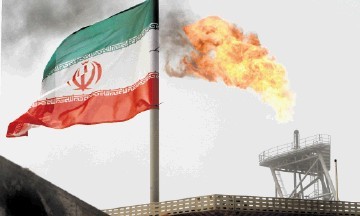
Iran just revealed its oil prices to European buyers for the first time since sanctions were lifted against the Middle East country. The most competitive pricing compared with Saudi Arabian supply in 21 months underscores its intention to win back market share.
Iran Heavy, one of the country’s main export grades, will cost $1.25 a barrel less than Saudi Arabia’s most similar crude in March, notices from both nations’ state oil companies show. The Persian Gulf country supplied Turkey during the sanctions and continued to publish prices for Europe throughout the measures.
Its most recent discount will be the deepest against the Saudi grade since June 2014. In Asia, having tracked Saudi prices since at least 2006, Iran is also giving deeper discounts for the grade.
The fifth-largest producer in the Organization of Petroleum Exporting Countries has said it will boost production and exports by 1 million barrels a day this year and is preparing to introduce a new heavy grade as it adds output.
The nation, which was OPEC’s second-biggest producer before penalties were stepped up in 2012, says others should make way for its return to the global market amid a glut and plunging prices.
“Iran is going to have to price aggressively until they can get themselves established once again in the market,” Robin Mills, chief executive officer of Qamar Energy, said by phone from Doha. “They’re trying to add a lot of supply to the market in a short time.”
Marketers at the state-run National Iranian Oil Co. can chase more than 500,000 barrels of lost daily sales in Europe alone now that sanctions limiting Iran’s oil sales to only six mostly Asian buyers have ended.
Under those measures, just China, India, Japan, South Korea, Taiwan and Turkey were allowed to buy limited amounts of Iranian oil without being subject to penalties. Iran’s oil exports fell to an average of 1.4 million barrels a day in 2014 from 2.6 million barrels daily in 2011, the year before the U.S. and European Union intensified sanctions, the U.S. Energy Information Administration said in June.
“Everyone is interested in Iranian barrels, as long as the price is reasonable,” Ehsan Ul-Haq, senior oil market consultant at KBC Energy Economics in Walton-on-Thames near London, said by phone Thursday, adding that its discounts were deeper than were necessary to be competitive. “When you start exporting to a certain region, you have to provide some certain introductory discount,” he said, referring to the European pricing decision.
The discount for March sales of Iran’s Heavy crude will widen by 35 cents to sell at $6.40 a barrel less than the regional benchmark for buyers in the Mediterranean region, according to a price list obtained by Bloomberg. Saudi Arabian Oil Co. cut its comparable Arab Medium grade by 20 cents a barrel to a $5.15 discount, according to a statement last week.
That means the Iranian barrels will sell for $1.25 a barrel less than the Saudi crude, the widest discount since June 2014, according to data compiled by Bloomberg.
In Asia, NIOC will offer supplies at $2.60 a barrel below the average of Oman and Dubai grades for March, according to a company official who asked not to be identified because of internal policy. That will set the crude at a discount of 20 cents a barrel to comparable Arab Medium from Saudi Arabia, according to data compiled by Bloomberg.
Iran, which has set its oil pricing for Asia as a quarterly differential to Saudi Arabia’s since the end of 2006, was expected to give buyers a 10-cent discount to Arab Medium next month, as it had in January and February.
“This is seen as a part of Iran’s method to win back its lost market share,” Will Yun, a commodities analyst at Hyundai Futures Corp. in Seoul, said by phone. “The country will need to have a good portion of its share restored before it can start negotiating with the Saudis and OPEC.”
Recommended for you
